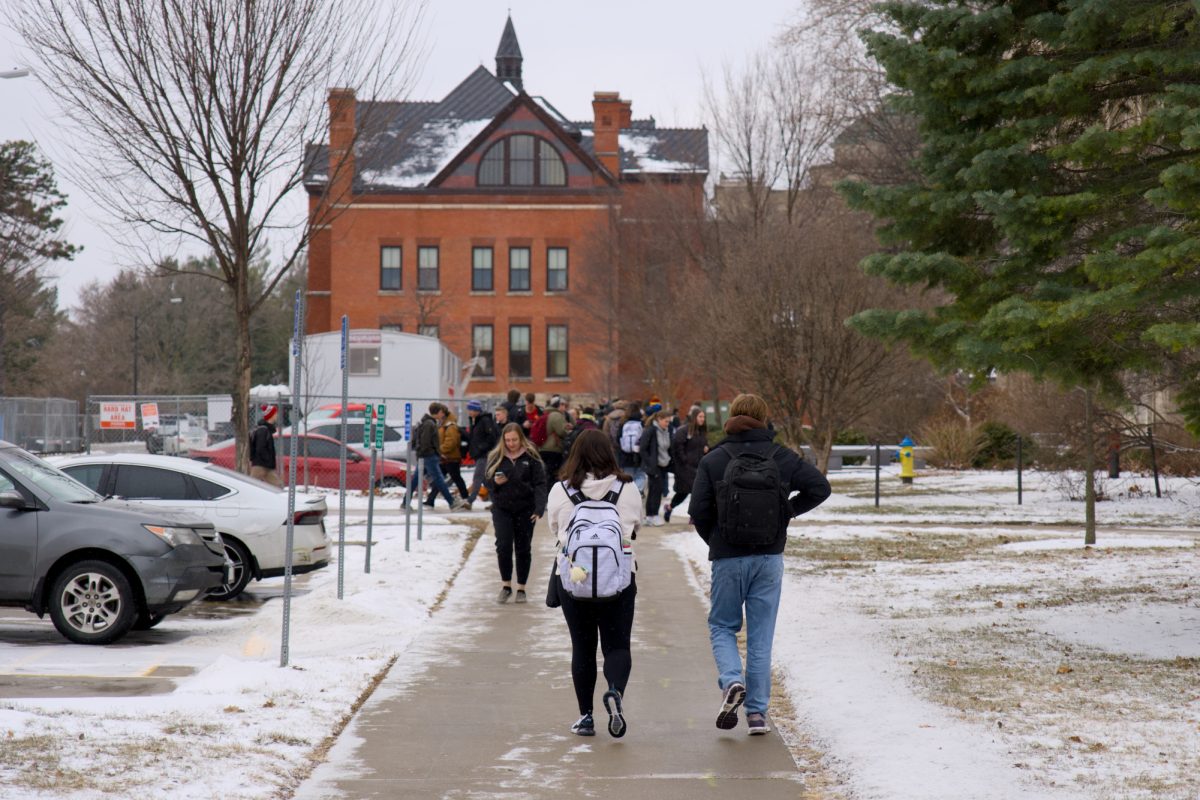Dangerous intersections plague Ames
June 9, 2003
Jennifer Briggs remembers how cold it was on Dec. 17, 2002. She remembers how fast she drove that day and what direction she was driving. She also remembers the look on April Otto’s face as her Pontiac Grand Am slammed into the driver’s side door of Otto’s Ford Taurus at the intersection of Dickinson Avenue and Steinbeck Street.
“It felt like there were no cars inbetween us,” Briggs, senior in child, adult and family services said. “I was just staring at her face.”
Every year, more than 40,000 of the 6 million people that get in automobile accidents die, according to statistics compiled by the U.S. Bureau of Transportation.
To Ames traffic engineer Kevin Woodard, that number is tremendous.
Woodard studies and compiles statistics about traffic flow and accident rates for intersections in Ames to help avoid accidents like the one Briggs and Otto were in.
The number of accidents at the intersection of Dickinson Avenue and Steinbeck Street where Otto and Briggs collided rose significantly from 2001 to 2002. In 2001, the intersection did not even make the city’s top 25 intersection accident locations list. In 2002, the intersection was ranked 16th in Ames accidents.
Briggs said there was a temporary two-way stop at the intersection when she first moved in two years ago. The stop signs were removed and permanent ones were then put in their place.
Briggs said it was after the permanent stop signs were put in place that she crashed into Otto. Briggs said Otto ran a stop sign.
Otto said she could not see Briggs because of parked cars.
Woodard said the city does not use signals or stop signs in an intersection unless they have to.
“We wait to get to a certain threshold such that we can be reasonably certain the signal will be more safe rather than less safe.” he said.
Woodard said signals and signs can increase the rate of accidents rather than decrease them.
“People have more faith in our signs and signals than they ought to. We believe it’s safer if people are looking each way as they go into the intersection,” Woodard said.
Since the stop signs were put in the Dickinson Avenue and Steinbeck Street intersection, Woodard predicts the total number of accidents at that intersection to decrease for 2003.
“The stop signs themselves probably helped out a lot but with the cars parked[on the side of the street] it’s a blind intersection,” Otto said.
“I think it’s a very dangerous intersection, especially in a college town where a lot of us are in hurry,” Briggs said. “I don’t think that college kids pay enough attention when they’re driving.”
Briggs believes the outcome could have been much worse.
“She could have been killed if I would have been going any faster,” Briggs said.






